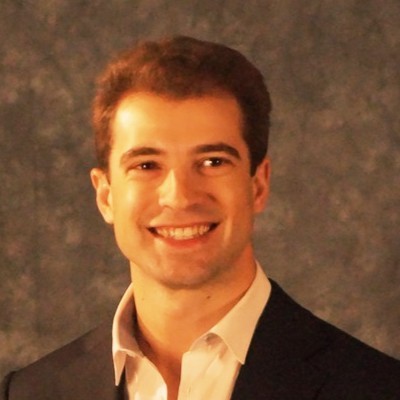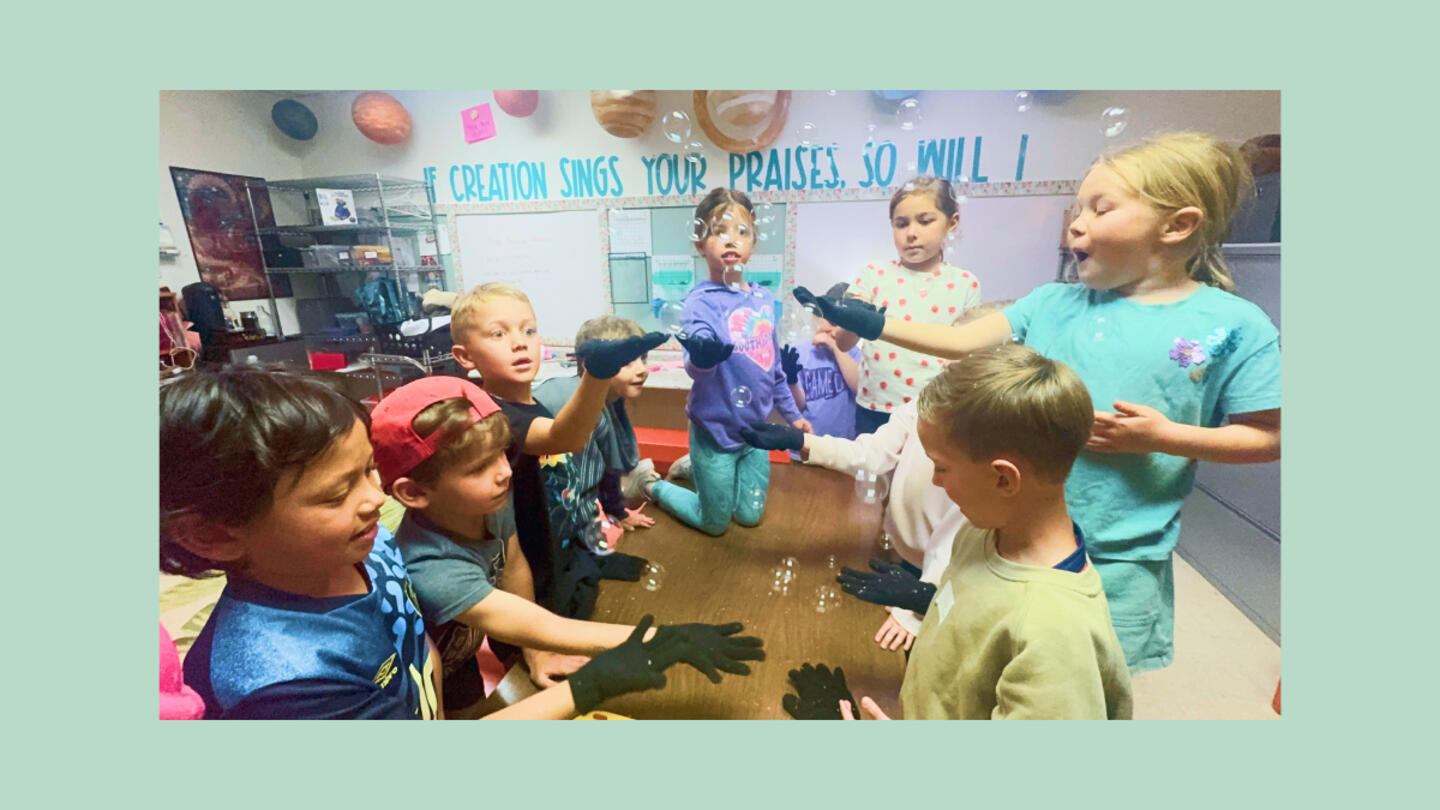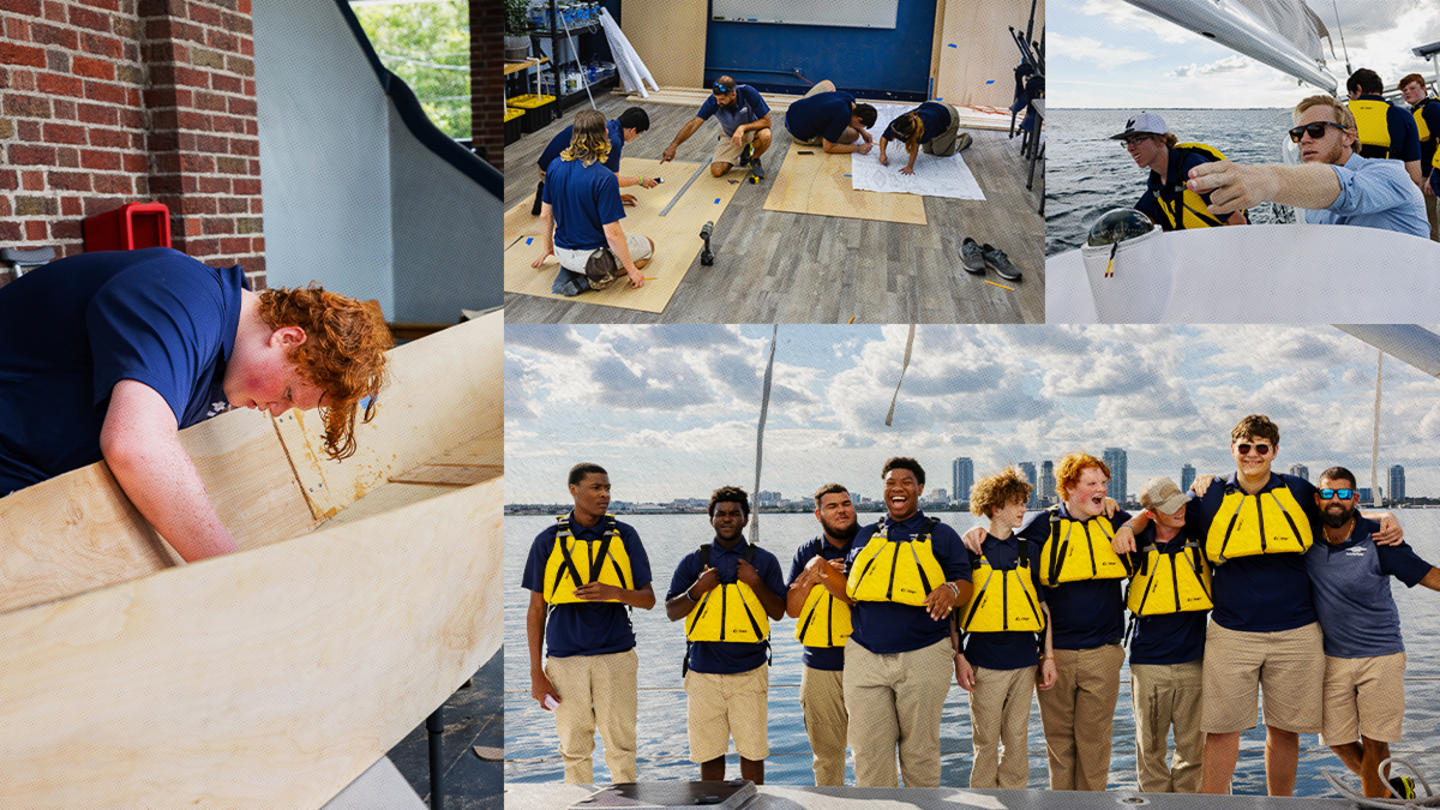Reginald Booth is your typical high schooler in many ways — but in many ways not.
Like many of his peers, Booth is beginning to understand how his skills can translate into a fulfilling career. But unlike many kids his age, his school doesn’t teach to tests and point everyone toward college like our traditional one-size-fits-all education system. Rather, SailFuture Academy in St. Petersburg, Florida, uses a hands-on, personalized curriculum that helps students tap into their interests. For Booth, that’s entrepreneurship. He already has his own cosmetics business.
Booth represents a growing movement in American education in which students and families are shifting away from the traditional K-12 system to more alternatives like SailFuture that offer individualized approaches. These schools inspire students by helping them realize their own skills and interests, a better way than a top-down system that requires them to adapt to a cookie-cutter curriculum, test well, and then go to a four-year college. The upshot is that families get an education that meets their child’s needs, one that inspires students to not only learn but also contribute to society.
COVID-19 spurred the already growing movement. Lockdowns and at-home schooling forced parents to reckon with their children’s education. Today, it appears our education system is at a tipping point. According to a 2024 survey by Tyton Partners, a leading strategy consulting and investment banking firm in the education sector, 48% of parents express a strong interest in pursuing new and additional educational programs for their children.
How did we get here?
The traditional education system wears down parents and students who don’t fit the mold
The American education system is good at accommodating certain types of students: Those with a knack for testing and a goal of higher education.
However, for the many students who don’t fit that description, attending school can often feel like a burden rather than an opportunity.

Christian Lehr, a director at Tyton Partners, saw this firsthand as a teacher and adviser. Lehr said even the best and brightest students struggle in the traditional education system. He described one particular student as “brilliant” and “an incredible writer” who also excelled in quantitative reasoning and numbers. Yet, on paper, he looked to be struggling.
“It was impossible to show his potential and what made him so special,” Lehr said. “His test scores at the end of the year were not reflective in any shape, way, or form of his intellect and his capacity.”
In the traditional schooling system, students are often boiled down to test scores, which often don’t reflect their capabilities. This can be frustrating for families, who then face the uncomfortable task of challenging the school’s curriculum or teaching methods.
Lehr said this problem can grow to the point the student is skipping school, facing psychological repercussions, or battling behavioral issues in the classroom.
“It’s hard, the path of least resistance is very, very comfortable in a lot of ways — it’s local, it’s convenient, it’s free,” said Lehr, explaining parents’ predicament. “One of our key findings is that there is a catalyst that pushes them off the path of least resistance and onto a new road.”
Frustrations and COVID pushed parents to make the leap
For many parents, the pandemic provided the nudge to explore alternative learning opportunities. Whether they wanted to or not, most children were pushed into an in-school alternative — virtual learning.
The experience wasn’t a positive one for many when traditional schooling's shortcomings became glaring to parents.
“Coming out of the pandemic, parents really started to see the limitations of that status quo. They had a front-row seat,” Lehr said. “And several of them were disappointed in what they saw.”
A Tyton survey in 2022 found 50% of parents said it was time for a more student-centric approach to our K-12 education system. In 2023 the Populace Purpose of Education Index said 71% of the U.S. population believes the educational system should change.
“The education and K-12 model hasn’t really changed from the industrial age and this one-size-fits-all, four walls of the classroom,” Lehr explained. “[The pandemic] validated that we are at a very transformative point in time where parents are incredibly interested in — and kind of biased towards — something new and different.”
Sign up for Stand Together's K-12 newsletter and get stories, ideas, and advice from changemakers who are transforming education across the country.
Time for alternative schooling models to shine
As discontent grows with the traditional school system, more and more parents turn to alternative schooling opportunities.
Parents seeking out new, innovative learning opportunities for their kids provide the space for microschools, homeschool co-ops, forest schools, and other innovative education models to shine. In 2023, 18 states expanded school choice offerings. In Las Vegas, the National Microschooling Center launched at the onset of the pandemic and now encompasses over 20 different microschools across Nevada.

SailFuture Academy is one of the alternative schooling options filling a need. The innovative school teaches life skills. Its intent isn’t for every student to go to college — a goal Americans ranked as being one of their lowest priorities in a 2023 survey from Populace. Instead, the goal is to help students find purpose and develop practical skills.
Booth is proof. He struggled in school before finding his footing at SailFuture.
“I always struggled with my insecurities about how I think,” Booth said. “I tend to think [through] things pretty slow and overthink it ... but coming to SailFuture, it taught me how to take my time, take it in, process it, and mold it into what you want.”
As Lehr and Tyton Partners study alternative schools around the U.S., they often hear stories similar to Booth’s. For Lehr, one of the things he finds most impressive is how well students do when they are given the independence to design their own pathways.
Lehr said the next step for getting parents to take the leap is for them to see just how successful alternative education options are and know what options are available to them.
“It’s not quite as concrete as picking out a new car where you know the models, you know the price point, you know the pros and cons and trade-offs,” Lehr explained. “It’s a lot of hard work, time, and effort to take the leap. There is very limited awareness of what’s out there and then very limited ability without decision support infrastructure to filter through and find the right matches and fits.”
However, once families have the knowledge, resources, and confidence with alternatives (something that Lehr’s organization is working towards), Lehr believes the future of schooling could be changed forever.
“[The] indication is that it is going to be more of a revolution, in the way that there is so much demand, so much policy, and so much funding at the state level that enables and equips families to seek out alternatives,” Lehr said. “There are a lot of indications socially, culturally, politically that there is going to be more of a seismic shift.”
More on SailFuture:
- Go deeper on SailFuture’s secret sauce for transforming education
- Learn how four students and instructors found their way at the innovative school
- 📽️ Watch SailFuture students and teachers apply hands-on learning on the high seas
***
SailFuture Academy is supported by Stand Together Foundation, which partners with the nation’s most transformative nonprofits to break the cycle of poverty
Learn more about Stand Together’s education efforts and explore ways you can partner with us.

New Johns Hopkins data shows homeschooling’s recent surge has transformed the education landscape.
Step 1: Find the best learning environment for your child. Step 2? Figure out how to pay for it.

Here’s what happens when AI replaces teachers.

Four suggestions for policymakers and education influencers wanting better choices for families.
